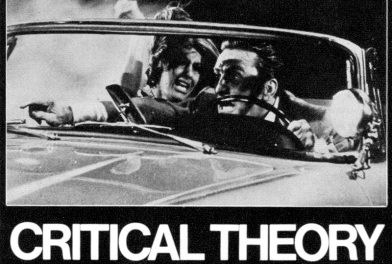(TV that just didn’t get it right…)
Medical television is subversive. Because it touches upon questions that are themselves subversive, divisive, invasive (like many of the diagnostic, therapeutic, or preventive practices of medicine), it touches upon questions that, like television itself, are both perennial and ephemeral, and haunt cultural practice, economy, and policy-making. On the other hand, medical television is also (rather) conservative in the sense that, as ‘good’ (predictable, calculable, and as a consequence, viable) television, it tends to rely on (that is, re-use and replenish) well-established generic and narrative formulas that enable it to produce a potentially infinite number of narratives. Perhaps.
Medical television is also political, because it addresses social anxieties about public and private health. It thematises the commercialisation of healthcare practices (either through the criticism of public health services or through a celebratory promotion of specific institutions, programmes or initiatives). It engages with questions of (dis-)empowerment in the contexts of race and gender, and re-positions the concepts of bio-power (the manipulation and control of the human body, and by extension, the agency and responsibility in corporeal discourse) through diverse takes on participation, awareness, and the ways doctors and patients are produced in the medical eco-system (cf. Ostherr 215-216). It discloses society’s proneness to self-medicalisation (cf. Mirzoeff 1-8), not to mention the plethora of social pathologies that it helps to reproduce and circulate. As a consequence, medical television both inflates the myth of medicine and that of the powerful physician, or in our case, the trauma surgeon whom patients meet at their most vulnerable, at the time of distress, and ‘deconstructs’ it with the same move – precisely through a realism that derives from the subversive character of medicine. At least that’s what medical drama has been like so far…
Critical (Sky 1, 2015-), a new medical drama in this year’s spectrum provides a fine example of practice not only for the ways in which medical television is conservative, or political for that matter, in terms of form and concept, but also for the ways in which it is not. The show debuted on Sky 1 on 24 February 2015, and is set in a futuristic, highly advanced fictional trauma centre. Each of the 13 episodes focuses on a single patient, and sees the trauma team try to save the patient’s life.

In Playing Doctor: Television, Storytelling and Medical Power, Joseph Turow notes that in spite of the initial hard times ER was having before it finally got picked up by NBC in 1994, the programme introduced a ‘new definition of medical realism for television’ through an energetic delivery of a no less energetic content. One of the reasons for the initial hesitation on the part of networks, Turow argues, was that the programme’s creator, Michael Crichton (himself a medical professional) ‘had filled the script with frenetic action and insider lingo’ (331). However, it was precisely the highly technical character of the underlying concept in regards to dialogues, procedures, or the technologies on and of the screen (i.e. what we see on the show as compared to the technologies proper to the television screen that makes specific ways of seeing possible) that that helped re-shape the landscape of medical television. And Critical apparently followed suit with a language heavily overlaid with medical jargon. Since ER first became a hit drama, body trauma has come to denote more than just a specific form of medical emergency, or as far as television goes, a theme upon which action-heavy, dramatic and, most importantly, spectacular programmes can be based. Like many other televisual (and cinematic) forms, body trauma is both a genre AND a style: its ‘race-against-the-clock’ narrative is delivered through fast-paced sequences, extensive use of steady cam and POV filming, vehement camera movement, fast-paced non-diegetic music overlaid (and synchronized) with the diegetic sounds of surgical tools and of medical equipment monitoring the patients’ vitals. Through their graphic portrayals of bleeding wounds, body cavities propped open, complicated surgical procedures and, later on, of high-tech diagnostic and therapeutic machinery, ER and its successors re-introduced to the television screen a visual culture of medicine that, as Kirsten Ostherr argues, was for a long time reserved for institutionalised forms of education and research. These elements (that re-positioned the concepts and standards of style and aesthetics, narrative and compositional logic) were once considered subversive, but, as it was to be expected, have by now become conventional, somewhat obligatory constituents of a realist medical iconography. And as such, they have become highly formulaic.
With Critical, the creators’ intention was to bring realism on medical television to the next level by pushing the boundaries of realism as well as those of the genre beyond their limits. At first sight, the programme eliminated most of the melodramatic elements of medical fictions as well as direct celebratory takes on medical heroism. Characters’ back-stories and their interpersonal relationships are only hinted at in cryptic dialogues, the only exception being the apparent tension between trauma consultant Glen Boyle (Lennie James) and his former love-interest, vascular surgical registrar Fiona Lomas (Catherine Walker). What remains though is the focus on medical practice, the procedures and the protocols. The team as well as the plot are confined to the trauma centre. It becomes the space that defines the show’s characters, and we never actually see them in a different environment.
According to the series’ premise, the ‘one episode-one case’ scenario is taken rather seriously: the inbound patient, who has suffered a major trauma, needs to receive life-saving medical treatment within ‘the golden hour’, that is, the first 60 minutes after their arrival in the trauma centre. During this time, the team needs to stabilise the patient, i.e. localize the source of haemorrhage and stop the bleeding, and prep them for subsequent major surgical procedures – but nothing more. The patient in episode 2 for instance has an iron bar through her head (entering under the chin and exiting through the cheek on the opposite side), but the trauma team never attempts to remove it. They work their way around the iron bar to clear the patient’s airways and to restore proper oxygenation before they attend to her abdominal bleeding. Critical therefore does not feature any of the grandiose surgical manoeuvres that take up considerable screen time on ER and Grey’s Anatomy (ABC 2005-), nor does its depiction of preliminary diagnosis draw on the sadistic guessing game that provides the sarcastic (and consequently mood-lightening) touch on House (Fox 2004-2012).

Apart from a rather sci-fi inspired mise-en-scene that bears uncanny resemblance to Kubrick’s white sterile surfaces , the cinematography remains relatively conservative. The most important innovation the show introduced is that, during its 60 minute time span, events occur in real time – which resulted in critics dubbing it a programme ‘like 24 wearing surgical scrubs’. However, we don’t see any split screens, nor is there any particularly interesting or innovative camerawork that would reshape the visual compositional logic of this particular programme. In fact, the camera seems to be operated in a rather sparing (smooth and balanced) fashion, and there is a fairly conventional observance of the 180 degree rule in most of the shots. There is nothing that would be reminiscent either of 24’s (Fox 2001-2010) rather agitated camera pans, or even of ER’s constantly spinning camera that produced many of the programme’s memorable signature shots (cf. Butler 144). The dynamism of the show derives from spectacular body trauma and the emphasis on medical procedures rather than staff, which renders the show intense rather than jumpy. Also, the race-against-the-clock feel is made more emphatic through occasional pauses while nurses call the blood bank or anaesthetists read out the patient’s vitals, and images of the digital clock placed on the wall of the trauma room, and which Fiona ritualistically resets at the beginning of every episode.
These faster-paced sequences are intercut with scenes depicting the centrality of automatism and protocol. While the intention is clearly to create a sense of efficacy that facilitates procedures and decision-making both from an ethical and epistemic perspective, in dramas like Grey’s Anatomyautomatism and protocol are often dismissed (especially by young ambitious doctors) as factors that decelerate medical progress and discovery, whereas in House it proves to be a downright obstacle to therapy): every procedure is carefully archived via digital recording devices such as cameras and activity/procedural logs. It is as if the programme deliberately and purposefully suspended the personal/subjective aspect of medicine: the patients never interact with their doctors (they’re unconscious or sedated when they come in, and are under anaesthesia when they roll out to surgery). In fact, patients’ names are only mentioned in administrative contexts, and beyond that they are transcribed into machine-readable data and (medical) code, that is, numbers referring to their vitals (such as blood pressure, saturation, heart rate, temperature, amount of blood lost, amount of blood received through transfusion etc). Critical also does away with the follow-up that is so central to medical reality programmes like Hopkins or Boston Med. We don’t hear from patients, we don’t get to know much about their recovery. This dissipation of the patient’s subjectivity renders the show’s appeal to realism an interesting enterprise, since, like in real-life medical encounters, the viewer may have the impression that the programme reduces the physician to an intermediary between the technological apparatus and the patient’s body.
But in the end, Critical seems to be rather conventional when it comes to the portrayal of surgical procedures, and most importantly, the channelling of their underlying medical episteme. Its intense close-ups of gaping body cavities filled with blood, organs that need to be exposed for closer inspection and treatment, and the physical proximity of the trauma surgeon’s body to that of the patient’s reiterate well-known Foucauldian amusements with the medical gaze and touch, together with Kristevan preoccupations with the abject – which, of course, does not appeal to every viewer. While Critical proposes to bring realism in medical television to a new level, in actuality its suspension of the melodramatic aspect of medical television in favour of a more pronounced focus on procedure comes at the expense of a subjectivity without which medical drama runs the risk of becoming no more than protocol. Like I said at the beginning of this entry, medical drama is (supposed to be) subversive, because it is supposed to ask questions that are themselves subversive, and as such both perennial and ephemeral. I don’t see that happening on this programme…
David Levente Palatinus holds a lectureship in Contemporary Literature and Culture at the University of Ruzomberok. He has published on forensic crime fiction, corporeality, digital media, and violence and deconstruction. He is currently working on a booklength project called “The PathologEthics of Culture.”





